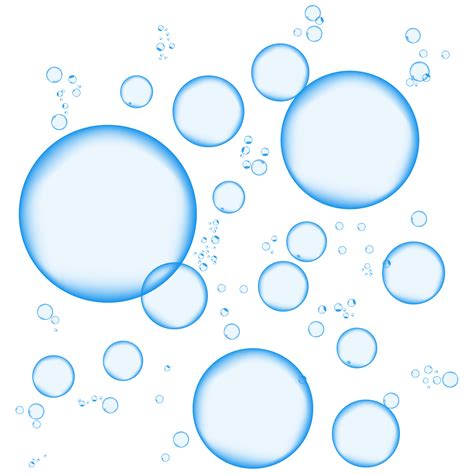Transparent bubbles, often referred to as soap bubbles, have been a source of fascination for individuals across various age groups due to their mesmerizing beauty and intriguing physical properties. The delicate balance between the surface tension of the soap solution and the air pressure inside the bubble is what allows these transparent, shimmering orbs to float gently through the air. But what makes these bubbles so captivating, and what can we learn from their unique characteristics? In this article, we'll delve into the world of transparent bubbles, exploring their physics, chemistry, and the role they play in both entertainment and education.
Key Points
- The surface tension of a soap solution is crucial for creating stable, transparent bubbles.
- The formation and bursting of bubbles are influenced by factors such as humidity, temperature, and the presence of contaminants.
- Bubbles have educational applications, particularly in teaching concepts related to physics and chemistry.
- The study of bubbles can also provide insights into more complex phenomena, such as foam formation and fluid dynamics.
- Transparent bubbles have aesthetic and entertainment value, being used in performances and decorative installations.
Physics of Transparent Bubbles

The physics behind transparent bubbles is rooted in the concept of surface tension. Surface tension is a property of the surface of a liquid that allows it to resist an external force, due to the cohesive nature of its molecules. In the case of soap bubbles, the addition of soap to water reduces the surface tension of the solution, making it easier to create bubbles. However, it’s the balance between this reduced surface tension and the air pressure inside the bubble that determines its stability and transparency. The thinner the bubble wall, the more transparent it appears, due to the way light interacts with the thin film of the bubble.
Formation and Stability
The formation of a bubble involves the creation of a film of soap solution that encloses a volume of air. The stability of the bubble is influenced by several factors, including the concentration of the soap solution, the humidity of the surrounding air, and the temperature. High humidity helps to prolong the life of a bubble by reducing evaporation from the bubble’s surface, while low temperatures can make the bubble more stable by reducing the kinetic energy of the molecules in the soap film.
| Factor | Influence on Bubble Stability |
|---|---|
| Humidity | High humidity increases stability by reducing evaporation. |
| Temperature | Lower temperatures increase stability by reducing molecular kinetic energy. |
| Soap Concentration | Optimal concentration is necessary; too little or too much soap can reduce stability. |

Chemistry of Soap Bubbles

The chemistry behind soap bubbles involves the interaction between water, soap molecules, and air. Soap molecules have both hydrophilic (water-loving) and hydrophobic (water-fearing) ends, which allows them to reduce the surface tension of water and facilitate the creation of bubbles. The type of soap used can affect the durability and transparency of the bubbles, with some soaps producing more stable and longer-lasting bubbles than others.
Role of Surfactants
Surfactants, or surface-active agents, are compounds that lower the surface tension between two liquids or between a liquid and a solid. In the context of soap bubbles, surfactants play a crucial role in reducing the surface tension of the water, allowing for the easy creation and stabilization of bubbles. The structure of surfactant molecules, with their hydrophilic and hydrophobic parts, enables them to arrange themselves at the surface of the water in a way that minimizes energy, thus lowering surface tension.
The study of transparent bubbles is not only fascinating from a physical and chemical perspective but also has practical applications. Understanding how bubbles form and behave can inform the development of products that rely on the manipulation of surface tension and foam stability, such as detergents, cosmetics, and food products. Moreover, the aesthetic appeal of transparent bubbles has made them a popular element in decorative installations and performances, adding an ephemeral yet captivating dimension to artistic expressions.
What makes transparent bubbles stable?
+The stability of transparent bubbles is due to the balance between the reduced surface tension of the soap solution and the air pressure inside the bubble. Factors such as humidity and temperature also play a role in determining the stability and lifespan of a bubble.
How do soap molecules contribute to bubble formation?
+Soap molecules, with their hydrophilic and hydrophobic ends, reduce the surface tension of water, making it easier to create bubbles. This reduction in surface tension allows the soap solution to stretch and form a thin film around the air, creating a bubble.
What are some practical applications of understanding bubble physics and chemistry?
+Understanding bubble physics and chemistry can inform the development of various products, such as detergents, cosmetics, and food items, that rely on the manipulation of surface tension and foam stability. Additionally, the study of bubbles can provide insights into more complex phenomena, like foam formation and fluid dynamics.
In conclusion, transparent bubbles offer a captivating intersection of physics, chemistry, and aesthetics, providing a simple yet profound subject of study that can reveal complex principles of nature and inspire both artistic expression and scientific inquiry. Through their ephemeral beauty and the intricate balance of forces that sustain them, transparent bubbles remind us of the wonder and complexity that underlies even the most seemingly mundane phenomena.



